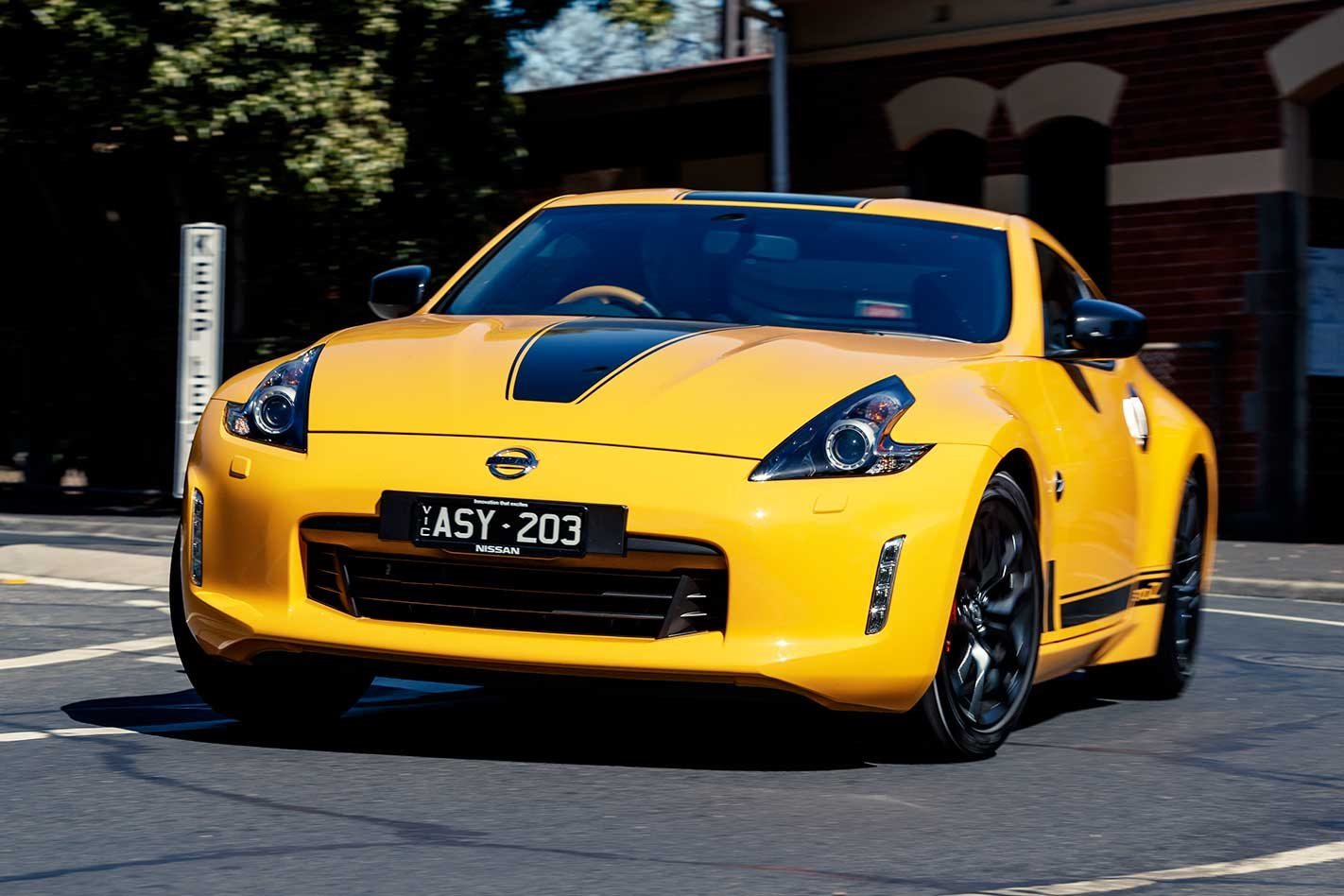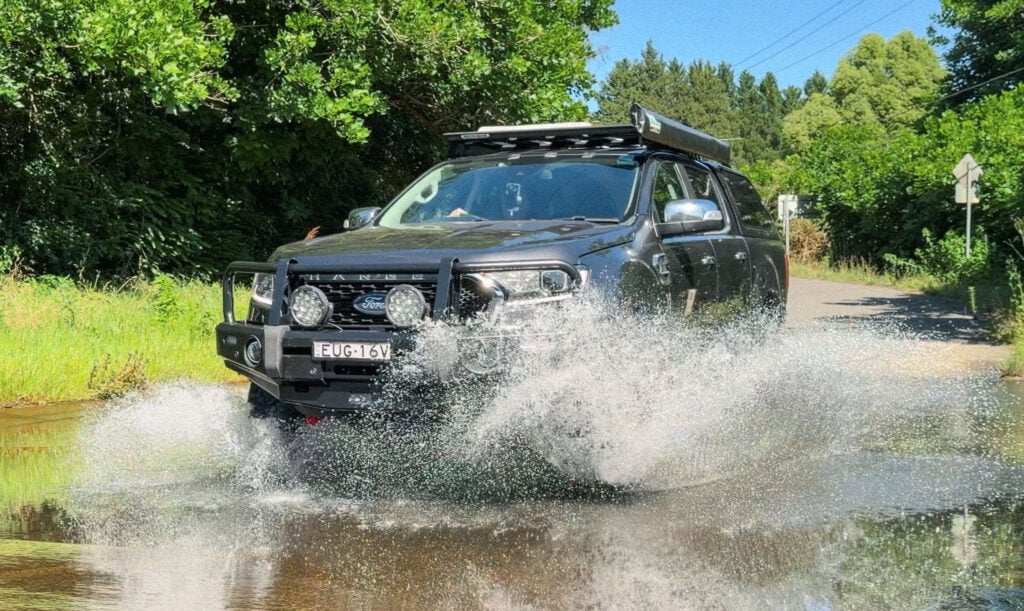Sports cars are the chameleons of the automotive world. Not because of their ability to blend in with their surroundings – most aim to do the exact opposite – but because of their unusually short lifespans. Chameleons tend to only live two or three years in the wild, which is typically the same amount of time it takes for sports car sales to fall off a cliff as buyers move on to the latest toy.
The Nissan 370Z is an exception. Just as a chameleon in captivity can live up to 10 years, this muscular rear-driver continues to slowly but surely leave showrooms, despite 2019 marking a decade since its introduction.
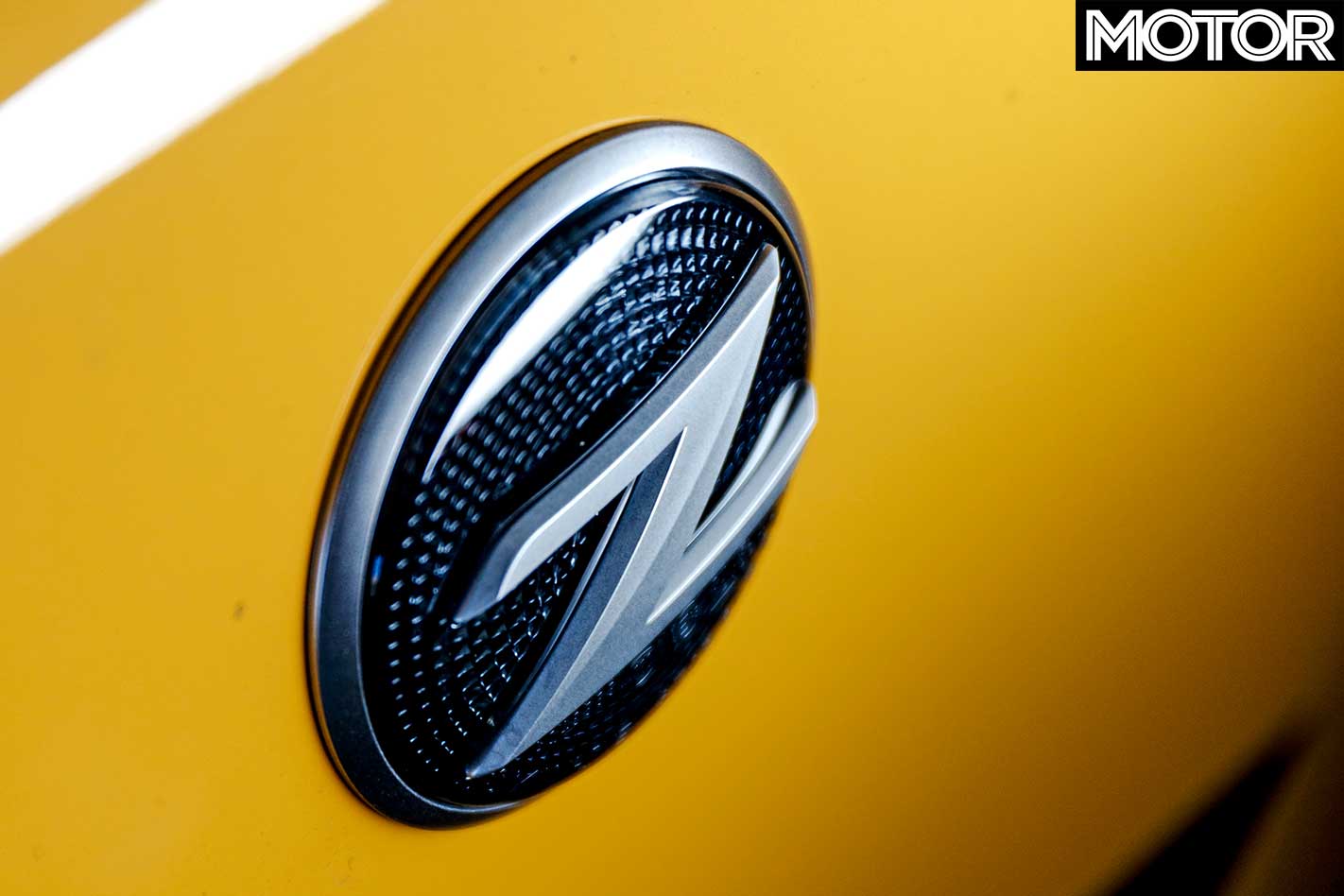
As you’d expect, its popularity peaked early on with sales of 681 cars in 2009 and 745 in 2010, but it’s remained remarkably immune to the ravages of time, hovering around 400 sales per annum.
Traditionally, this continued interest has been achieved by a steady trickle of new updates: more power, revised styling, extra gadgets. Nissan has taken a different approach, leaving the car more or less as-is but gradually lowering the price.
When the freshly fettled 370Z landed on Aussie shores in 2009, Nissan demanded $67,990 for the standard six-speed manual coupe. In 2018 dollars, that equates to around $80K, which makes the Z’s current $49,990 price tag somewhat of a bargain.
However, in the immortal words of 1990s knife salesman Tim Shaw: “But wait, there’s more”. Our test car is one of 50 N-Sport models, which further slashes the price to $48,490.
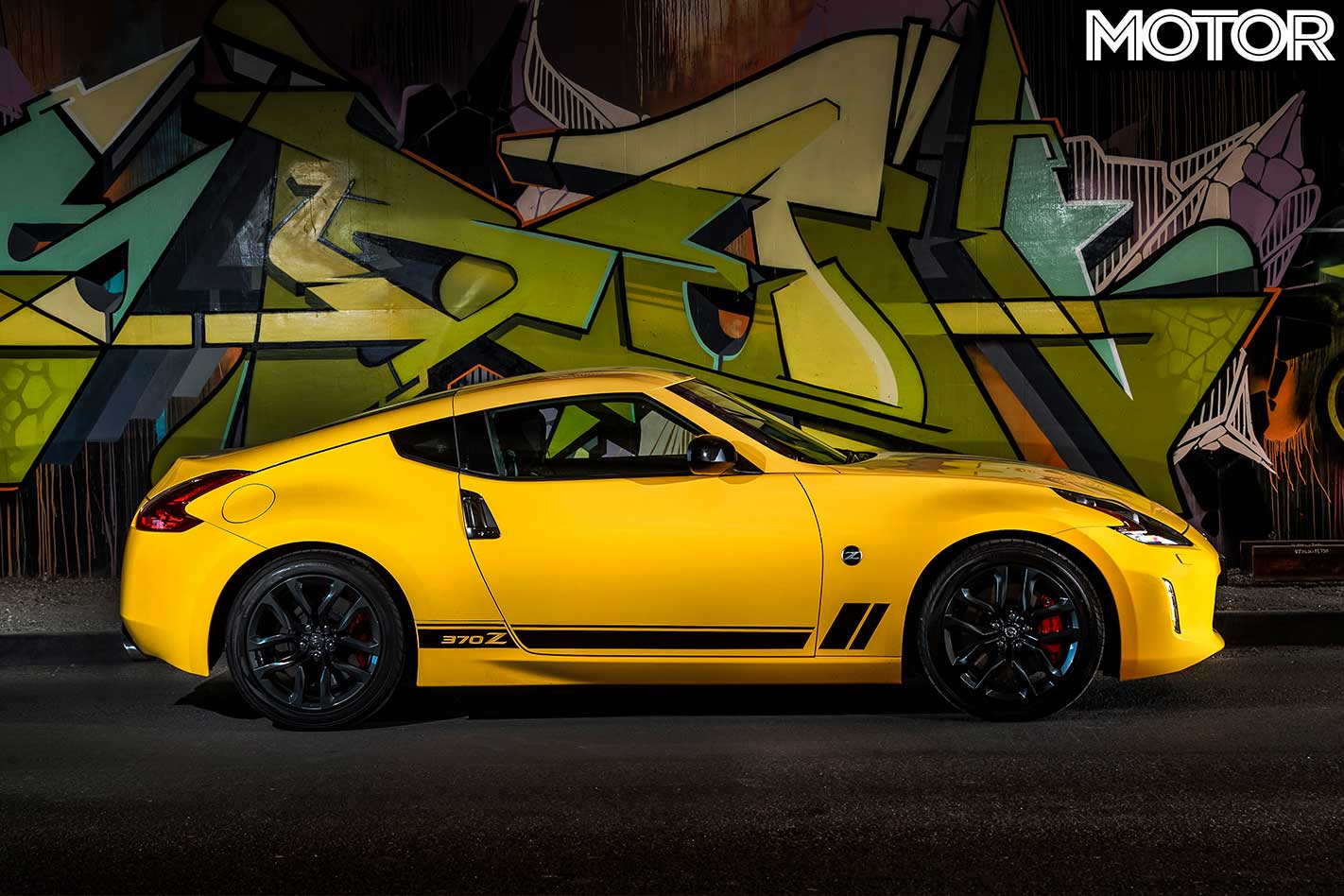
It’s inspired by the Datsun 280ZX Black Gold edition, built to celebrate the 10th anniversary of the Z-car in 1980; this isn’t a good start, as the 280ZX is widely regarded as the point the Z went off the rails, its weight ballooning and performance declining like the automotive equivalent of Elvis Presley’s later years.
The N-Sport touches aren’t groundbreaking, consisting of gloss black mirrors, ‘GT-inspired’ stripes and 18-inch wheels on the outside with cloth seats and lurid splashes of yellow inside across the door trims, steering wheel, shift knob, knee pads and dash. Given the interior treatment, the Chicane Yellow paint seems most appropriate, though Diamond Black and Shiro White are also available.
So why are we testing a decade-old car that hasn’t changed much? Simple, to see if it’s still relevant – especially in the context of its new price point – and to discover if there’s life in the Z concept.
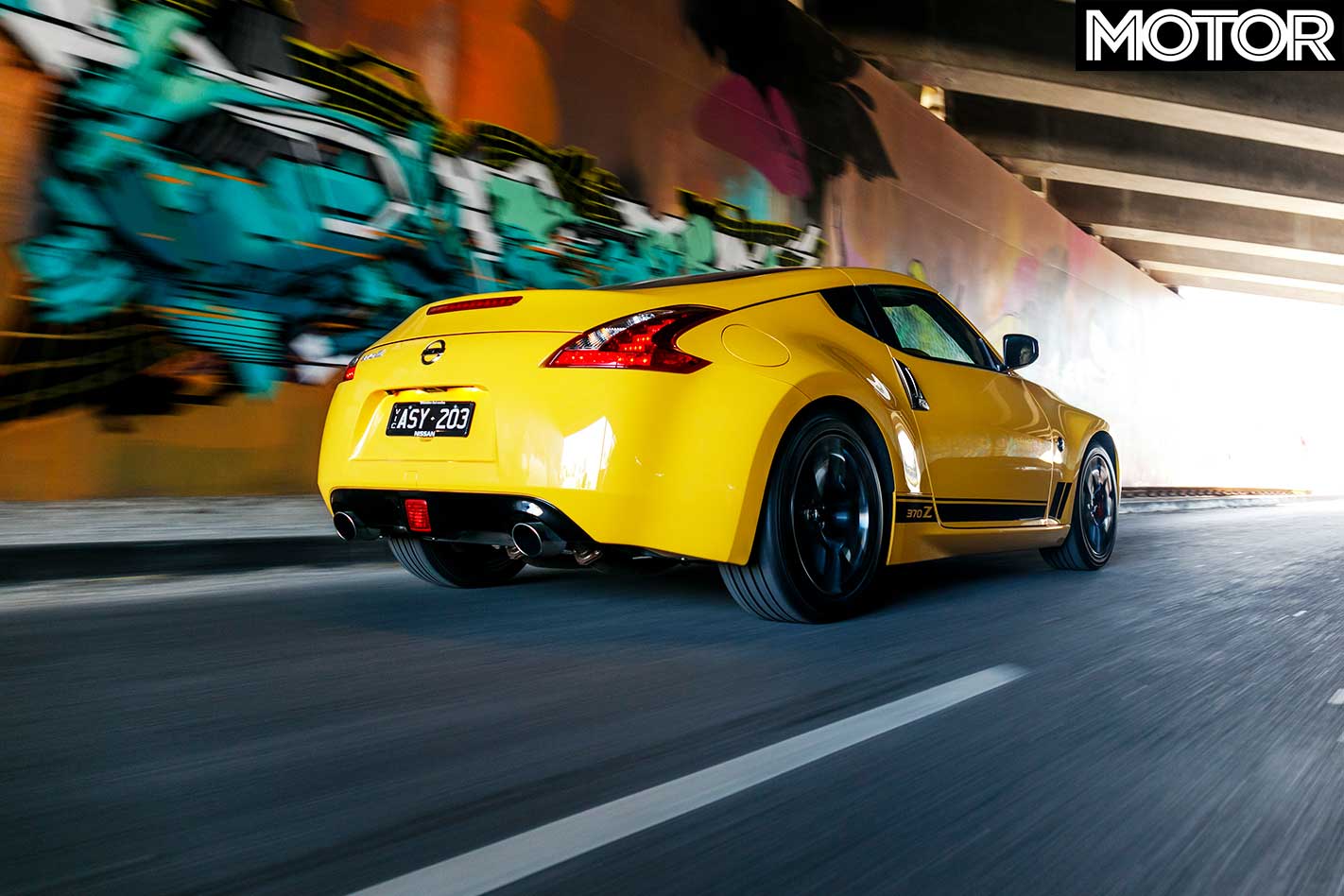
When the 370Z launched, its only real competition was the unresolved front-drive Alfa Romeo GT, gutless Mazda RX-8 and powerful but butt-ugly BMW M135i. None of those cars exist anymore, but had Nissan retained its previous pricing the 370Z would now be picking a fight with the Mustang GT, a fight it would struggle to win.
Instead, the 370Z finds itself head-to-head with the Mustang EcoBoost, which is a much more intriguing match-up. In manual guise, the Ford costs an identical (to the standard 370Z) $49,990 and offers 224kW/441Nm from its 2.3-litre turbo four, though it also has to lug around 1705kg. In contrast, the 370Z offers 245kW/363Nm from its 3.7-litre naturally aspirated V6, yet weighs just 1488kg.

As you’d expect, stepping inside the 370Z is to take a trip back in time, but that’s not necessarily such a bad thing. Rather than endless sub-menus there’s basically a button for every function, the driving position is good, the heated electrical seats are nicely supportive and the splashes of colour liven up what is otherwise quite a sombre interior.
The digital displays date it, there’s an annoying lack of storage space and it’s not going to win any material quality awards, but in a sports car the driving environment is key and the 370Z ticks this box.
It’s also refreshingly free of any driver aids: AEB, blind spot assist, lane keep assist, active cruise control, cross-traffic alert, in 2018 all are conspicuous in their absence. This lack of safety tech would have a catastrophic effect on the 370Z’s safety rating – though it wasn’t tested in the day, let alone now – but it’s nice not to have any electronic intervention when you perfectly clip that white-line apex.
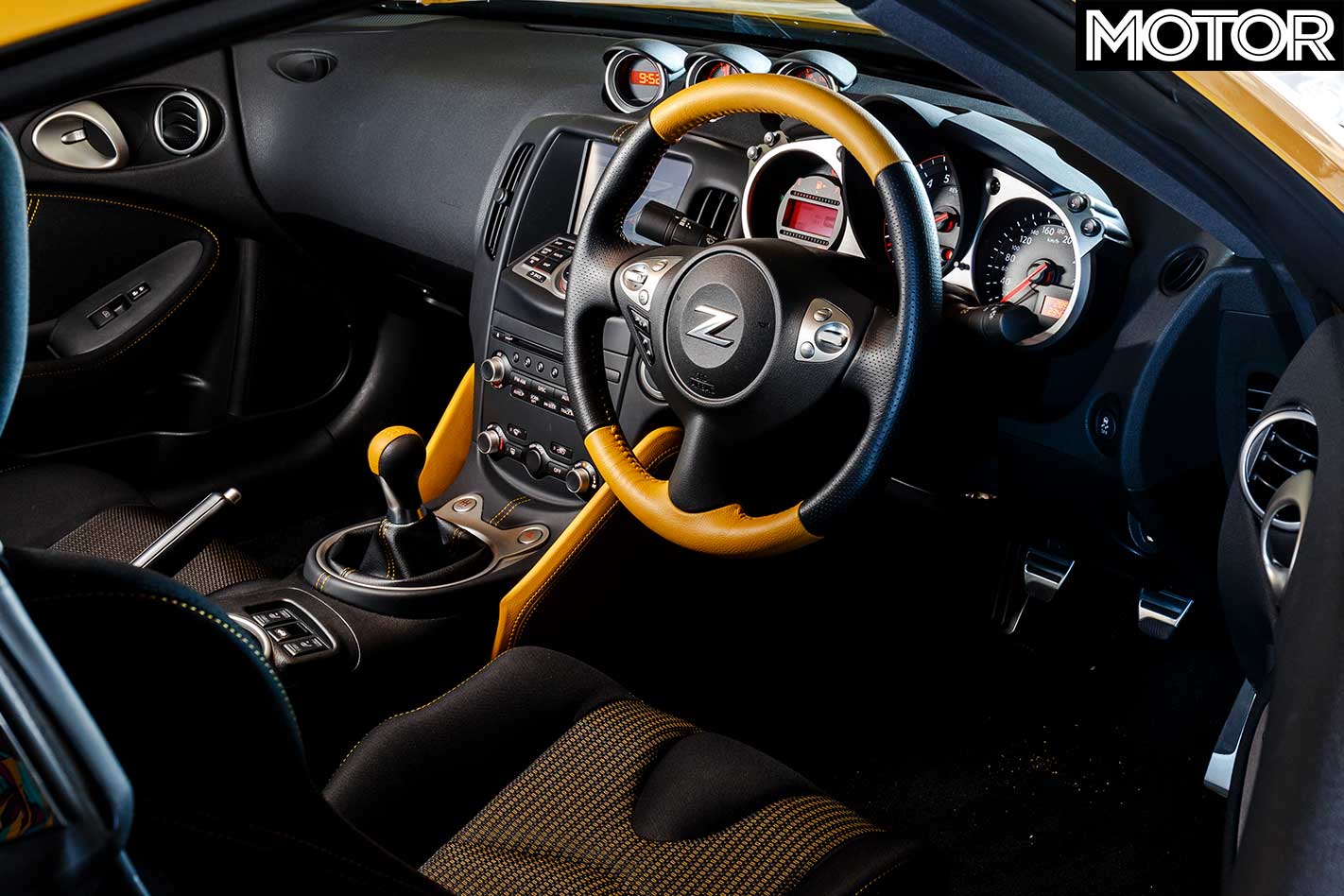
The only driver aid is ESP, which can be deactivated with one press of a button. Mostly, anyway. Deactivation is necessary as the ESP is as cautious as a newborn deer, dramatically cutting power at the first sign of enthusiastic cornering.
Its second-stage activation is strange; the ESP light will flash if the car slides at slow speeds yet it doesn’t seem to limit the lateral movement or kill the throttle. In the dry, the 370Z doesn’t have the torque to trouble its traction, anyway.
Its tyres are modest in width, just 225mm at the front and 245mm at the rear, but it takes a committed cornering effort and plenty of throttle for the rear to gently steer the car. Even then, the viscous limited-slip diff struggles to lock, resulting in inside wheelspin.
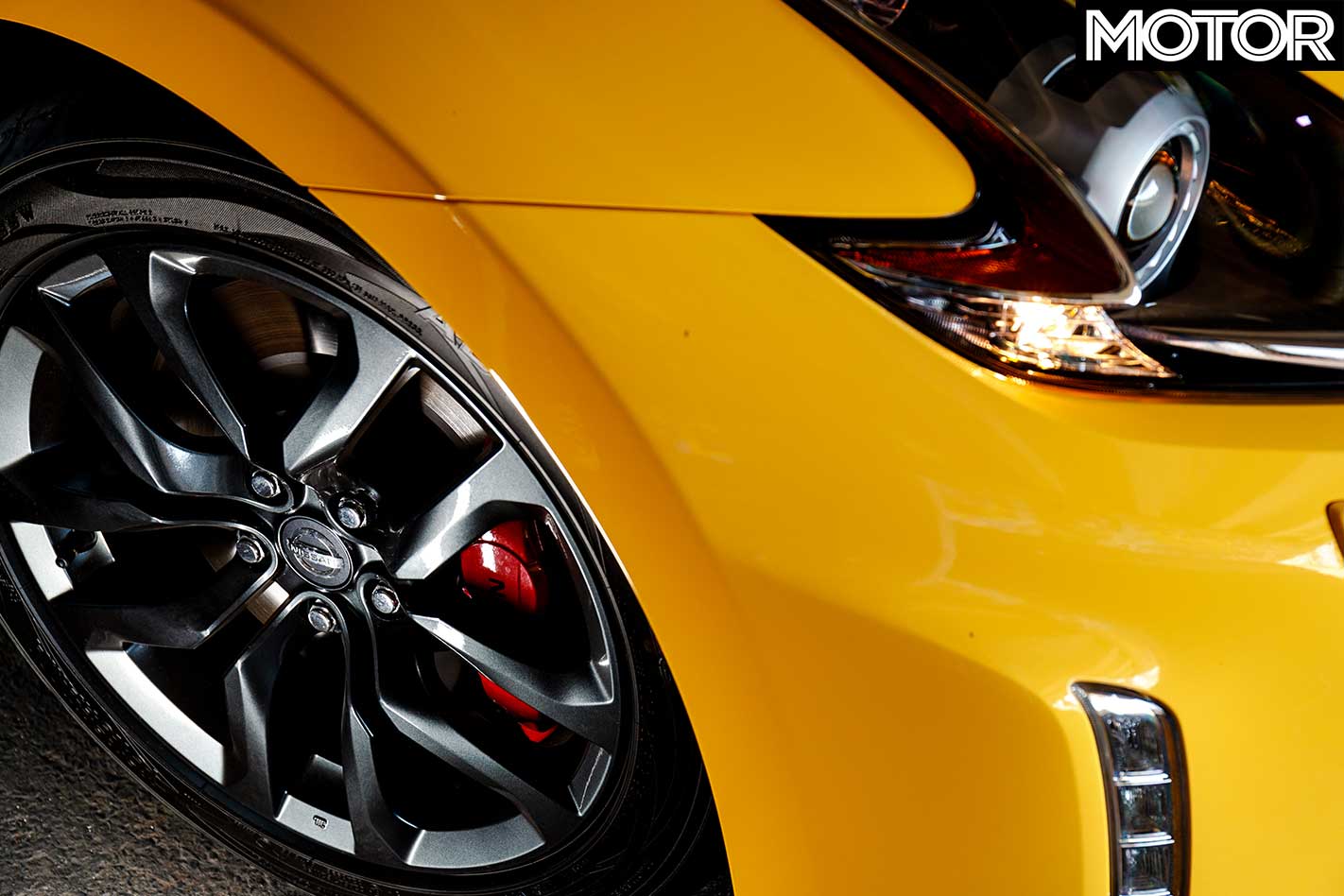
That said, if you can summon that commitment the 370Z can be steered with the throttle to a certain degree. Weight distribution is deliberately set to 55:45 front-to-rear, the logic being that under braking a higher percentage of the weight presses down on the front wheels, while under hard acceleration the weight balance is close to the ideal 50:50 for balanced corner exits.
In reality, it doesn’t quite work like that. The predominant handling characteristic at the limit is gentle understeer, transitioning to slight oversteer on corner exit. There’s not a lot of inherent adjustability in the chassis; lifting the throttle mid-corner will tighten the line, but it does so rather unpredictably and doesn’t telegraph its movements particularly well. Trail-braking to lighten the rear initially seems to work but the ABS freaks out at the unloaded rear wheel and grabs it viciously, putting an end to that idea.
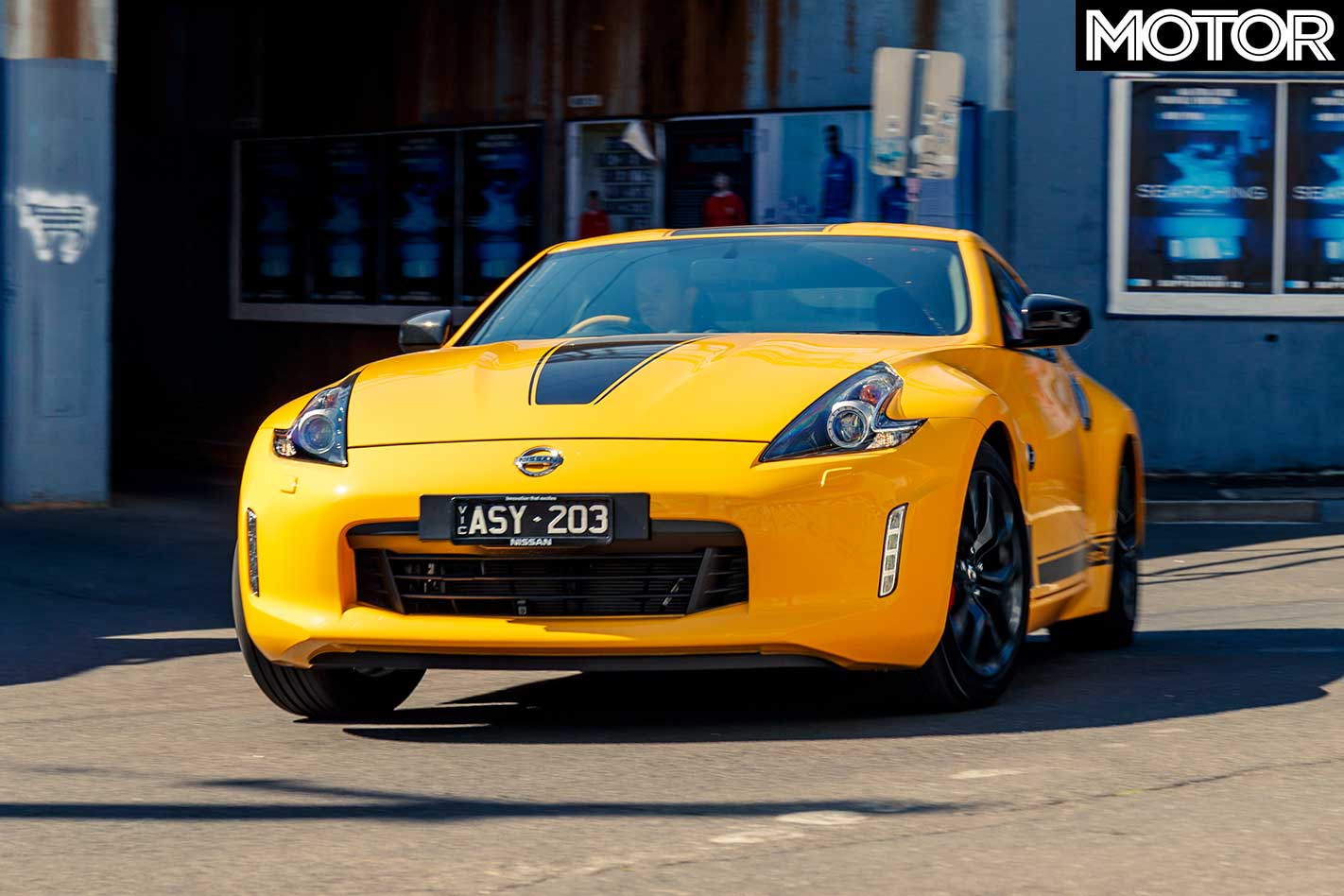
Despite its flaws, the 370Z is also fun and definitely more enjoyable than its over-gripped Nismo brother. It’s agile, impressively quick and easy to drive with excellent brakes. The steering is a bit too light but offers enough feedback and the chubbier tyres wrapped around the 18s give the handling some ‘squish’ – there isn’t an abrupt limit, but a more malleable one that gives the car the freedom to move around, even at road speeds.
The ride is okay, too, firm but without any crashing or undue jitteriness; bumpy braking zones can have the 370Z skipping about and bigger undulations can ask questions the dampers struggle to answer, however, in general the passive suspension tune is a good compromise.
The engine is less so. On the spec sheet a short-stroke, high-compression atmo V6 sounds tasty, the VQ37 sporting impressive figures (its specific output almost matches the new Mustang’s potent V8) and a 7500rpm redline.

The actual end result isn’t so impressive. There’s plenty of power, enough torque and the engine is mated to a six-speed gearbox with sensible ratios and a decent shift; trouble is, it just sounds and feels unpleasant. In this day and age, it kinda feels like an SUV engine that’s been slotted into a sports car, which given this generation of engine first appeared in the Pathfinder and Murano, isn’t too far from the truth.
Nonetheless, a decade on the 370Z still offers entertainment. It has a similar back-to-basics feel to the likes of the Toyota 86 and Subaru BRZ but with much greater performance. Yes, the interior is dated and the engine sounds strained, yet on a twisty road the Z’s rear-drive recipe can still cook up a smile.
Unfortunately, the 370Z’s biggest competitor is itself. Its sub-$50K price might well be sharp, however, the lack of any mechanical update means identical cars with fewer than 100,000km can be had second-hand for half that. Stretch the budget to $30K and you’re looking at around 40,000km.
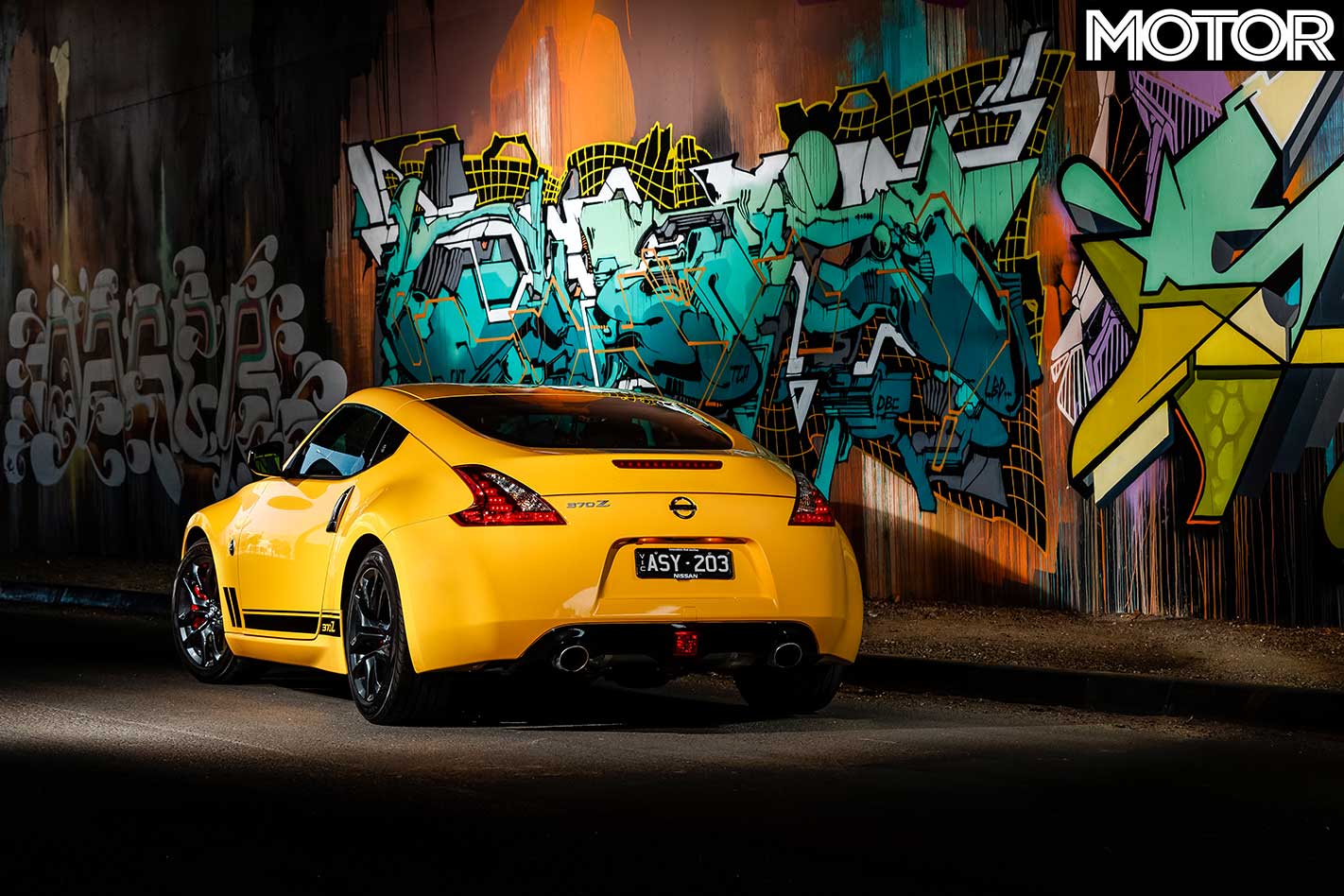
It’s clear that there’s still life in the Z concept, and Nissan’s Senior Vice President for Global Design, Alfonso Albaisa, recently confirmed he was working on a successor to the 370Z, previously thought to be a dead project.
With the Z’s 50th anniversary being celebrated this year, and Carlos Ghosn’s vice-like grip on Nissan’s finances now relinquished somewhat, hopefully the resources can be found within the mighty Renault-Nissan-Mitsubishi alliance to produce a proper Supra-fighting sports car and continue Japan’s performance resurgence.
FAST FACTS 2019 Nissan 370Z N-Sport
BODY: 2-door, 2-seat coupe DRIVE: rear-wheel ENGINE: 3696cc V6, DOHC, 24v BORE/STROKE: 95.5 x 86.0mm COMPRESSION: 11.1:1 POWER: 245kW @ 7000rpm TORQUE: 363Nm @ 5200rpm WEIGHT: 1488kg POWER-TO-WEIGHT: 165kW/tonne TRANSMISSION: 6-speed manual SUSPENSION (f): double A-arms, coil springs, anti-roll bar SUSPENSION (r): multi-links, coil springs, anti-roll bar L/W/h: 4265/1845/1315mm WHEELBASE: 2550mm TRACKS (f/r): 1549/1595mm STEERING: hydraulically assisted rack-and-pinion BRAKES (f): 356mm ventilated discs, 4-piston calipers BRAKES (r): 351mm ventilated discs, 2-piston calipers WHEELS: 18.0 x 8.0-inch (f), 18.0 x 9.0-inch (r) TYRES: Yokohama Advan Sport; 225/50 R18 (f), 245/45 R18 (r) PRICE: $48,490
PROS: Entertaining handling; strong brakes; impressive pace; price CONS: Dated interior; coarse engine; identical used examples RATING: 3.5 out of 5 stars
50 years of Fairlady
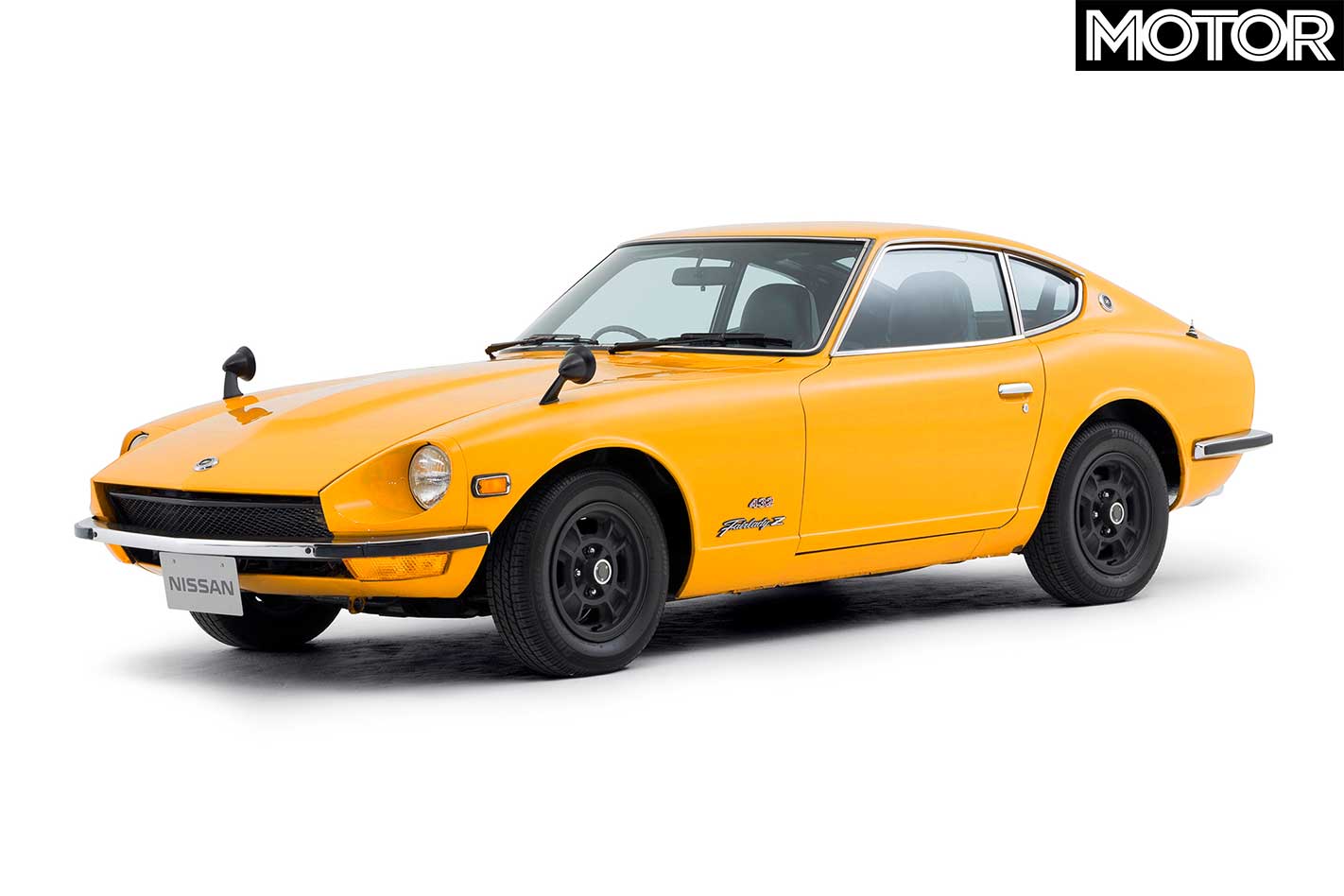
Mention the Datsun 240Z to car enthusiasts and you’ll receive knowing nods. Follow that up with Nissan Fairlady and those nods will likely turn to blank stares. In its home market the ‘Fairlady Z’ used a 96kW 2.0-litre straight-six, bar the high-performance Z432 models which housed the 118kW S20 engine shared with the Nissan GT-R.
For export markets a larger capacity 2.4-litre straight-six was installed producing 113kW/198Nm. Locally, it was expensive, costing about the same as a GT Falcon, but its quasi-E-Type looks, sports car dynamics and rally-proven toughness – it won the East African Safari in 1973 and a trio of Australian Rally Championships from 1974-76 – ensured its cult status.
Our April 1971 test discovered a superb ride, secure handling and performance roughly equal to a Torana GTR XU-1, recording 0-60mph (97km/h) in 10.0sec dead, a 16.7sec quarter mile and 192km/h top speed. E-Type comparable dynamics impressed, but high-speed stability was found wanting and the recalcitrant gearbox and ‘cammy’ engine made it difficult to drive smoothly at low speeds. You’ll need around $40K for a neat one today.


